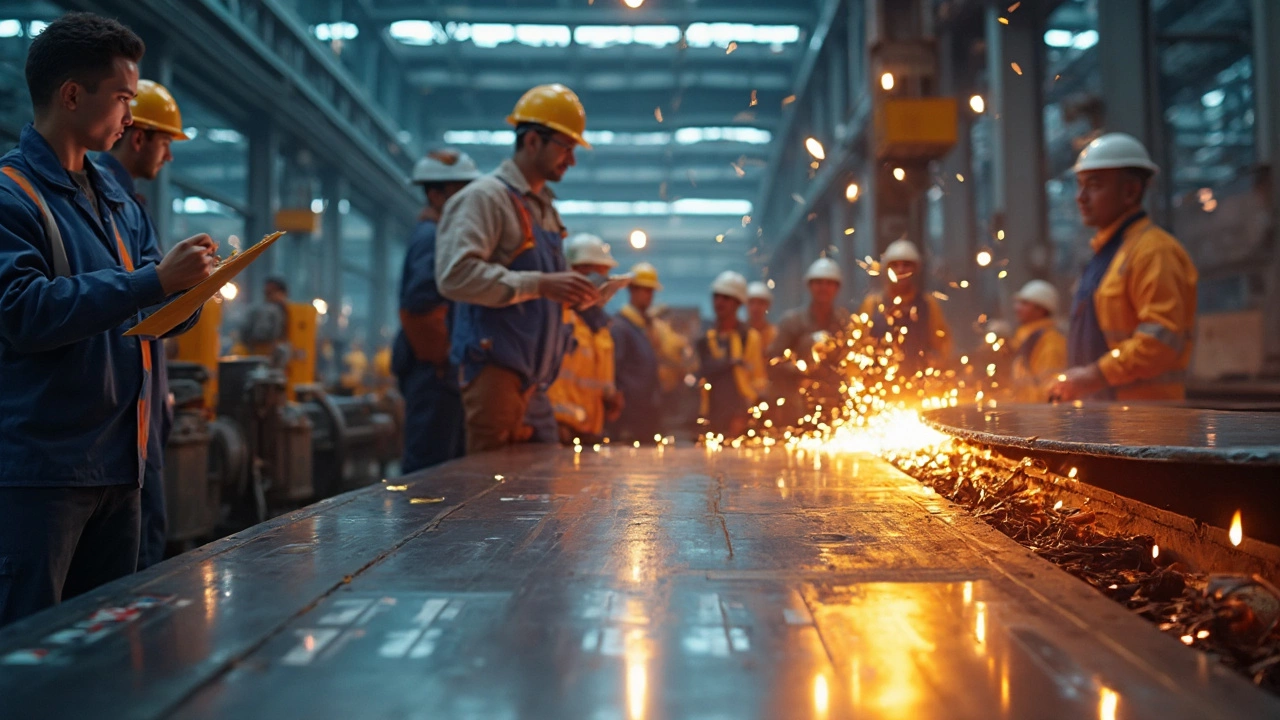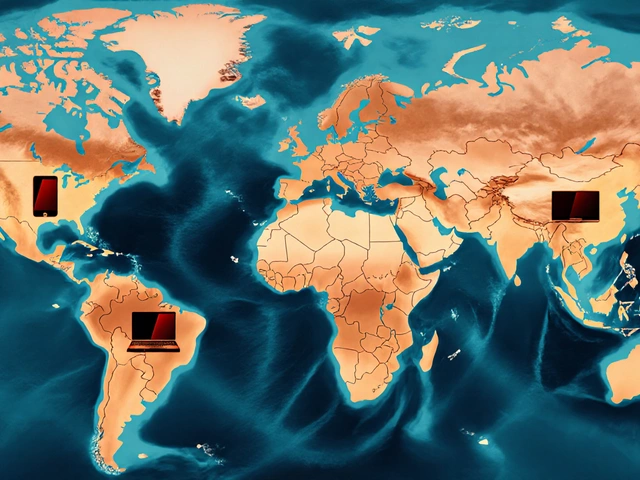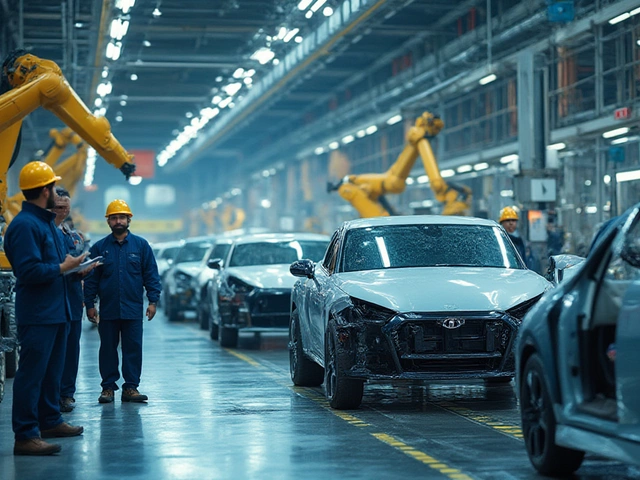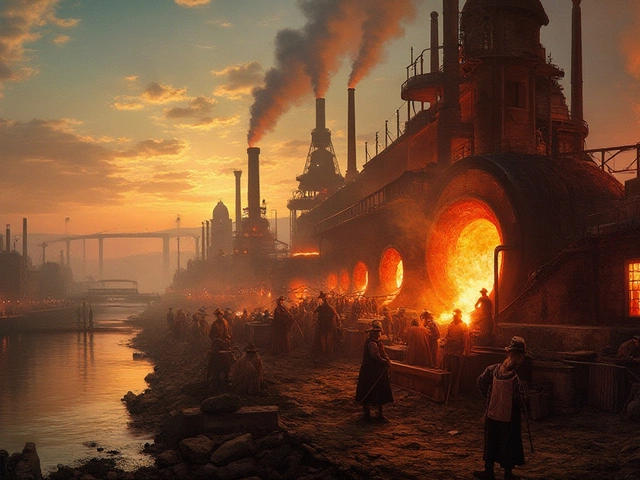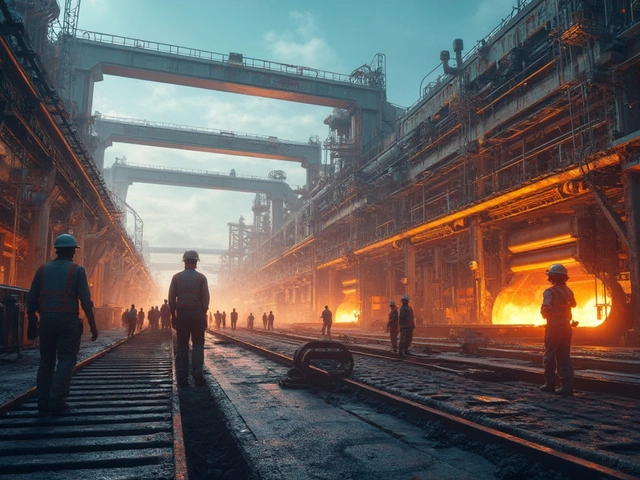Go shopping for steel, and you'll quickly realize it isn't a one-size-fits-all deal. The country your steel comes from can make a huge difference in everything from how long it lasts to how easy it is to work with. That’s why companies don’t just ask about price—they want to know about quality, toughness, and where that steel is rolling out from.
Back in the day, people just looked for steel that was cheap and available. Now, it’s a different story. Whether you’re building a skyscraper, a bridge, or even a car, you want steel that won’t let you down. But where does the best stuff actually come from? Is it still Germany with their crazy quality checks? Or is it Japan’s high-tech plants setting the standard? And how do new giants like China fit into the picture?
If you’re in the game—maybe as an engineer, a project manager, or a business owner—knowing who really leads in steel isn’t just trivia. It’s about making solid choices for your next project or supply contract. Cut corners here, and you risk way more than just a bad day on the job site.
- Why Steel Quality Matters
- Steel Titans: Who’s Leading the Industry?
- What Sets Each Country Apart?
- How to Pick the Right Steel Supplier
- Insider Tips for Sourcing Top-Notch Steel
Why Steel Quality Matters
Ever seen a building get shut down because of rusty beams or faulty welds? That’s what happens when you cut corners on steel quality. With so many countries producing steel, not all of it meets the tough standards needed for big jobs. The difference between good and great steel can decide if your project runs smooth or if you’re dealing with endless repairs and costs.
It’s not just about shiny looks. Steel gets rated on things like strength, resistance to weather, how easy it is to weld, and whether it keeps its shape under stress. Major industries—think auto, aerospace, or heavy construction—use strict tests to make sure they’re not getting stuck with low-quality metal.
Check out what Dr. Andreas Schneider from the World Steel Association had to say:
“The real value in steel comes from reliability. Quality steel means fewer failures, longer life, and lower total costs. That’s what engineers, builders, and manufacturers are really buying.”
Here’s what happens when you go for top-quality steel:
- Buildings stay sturdy, even in earthquakes or storms
- Machinery runs smoother with less breakdowns
- Cars get stronger frames without adding too much weight
- Bridges keep their shape even after decades of traffic
Think this is just talk? Check out these real-world numbers for best steel properties:
| Country | Typical Yield Strength (MPa) | ISO 9001 Certification Rate (%) | Average Service Life (Years) |
|---|---|---|---|
| Japan | 400-550 | 92 | 50+ |
| Germany | 420-600 | 95 | 55+ |
| South Korea | 370-540 | 87 | 45+ |
| China | 290-510 | 75 | 30+ |
Bottom line: spend a little more on quality, and you get more years, better safety, and happier clients. Skimp on it, and you’re rolling the dice with everything you build.
Steel Titans: Who’s Leading the Industry?
When you think about best steel, a few countries instantly pop up. China, Japan, India, and Germany rule this game, but they don’t all have the same strengths. Some pump out tons, while others focus on quality. You want something that works for your needs, not just what’s cheapest or biggest.
Let’s break down the big players. China is the king when it comes to quantity—it produces more steel than everyone else combined. That makes it a giant for basic construction stuff. Japan and Germany, though, are known for their insane attention to detail. If you’re after razor-thin tolerances and clean consistency, these countries are go-tos. South Korea mixes high quality with a massive output, thanks to brands like POSCO. India’s catching up fast, mainly because its plants are modernizing and expanding like crazy.
Check out these numbers from the World Steel Association for 2024:
| Country | Annual Production (Million Tons) | Main Focus |
|---|---|---|
| China | 1,030 | Volume, construction-grade steel |
| India | 135 | Volume, value steel on the rise |
| Japan | 90 | Precision, specialty steel |
| United States | 86 | Advanced manufacturing, automotive |
| Russia | 76 | Volume, basic steel |
| South Korea | 71 | High grade, shipbuilding |
| Germany | 39 | High-end, engineered steel |
Sure, these numbers show who’s putting out the most steel, but output doesn’t always mean quality. For example, German steel plants are some of the most advanced, pushing out steel used in top-tier cars and big infrastructure. Japan’s Nippon Steel leads with innovations like ultra-strong automotive steel, which is why you’ll find a lot of Japanese steel in trains and even bridges that stand up to earthquakes.
If you want cheap and loads of supply, China and India can deliver. But if your project needs steel that’s certified, with strict chemistry and performance records, Japan and Germany are your best bet. South Korea’s pretty much the only one that splits the difference, delivering massive volumes of good quality, which explains why their steel shows up in everything from ships to smartphones.
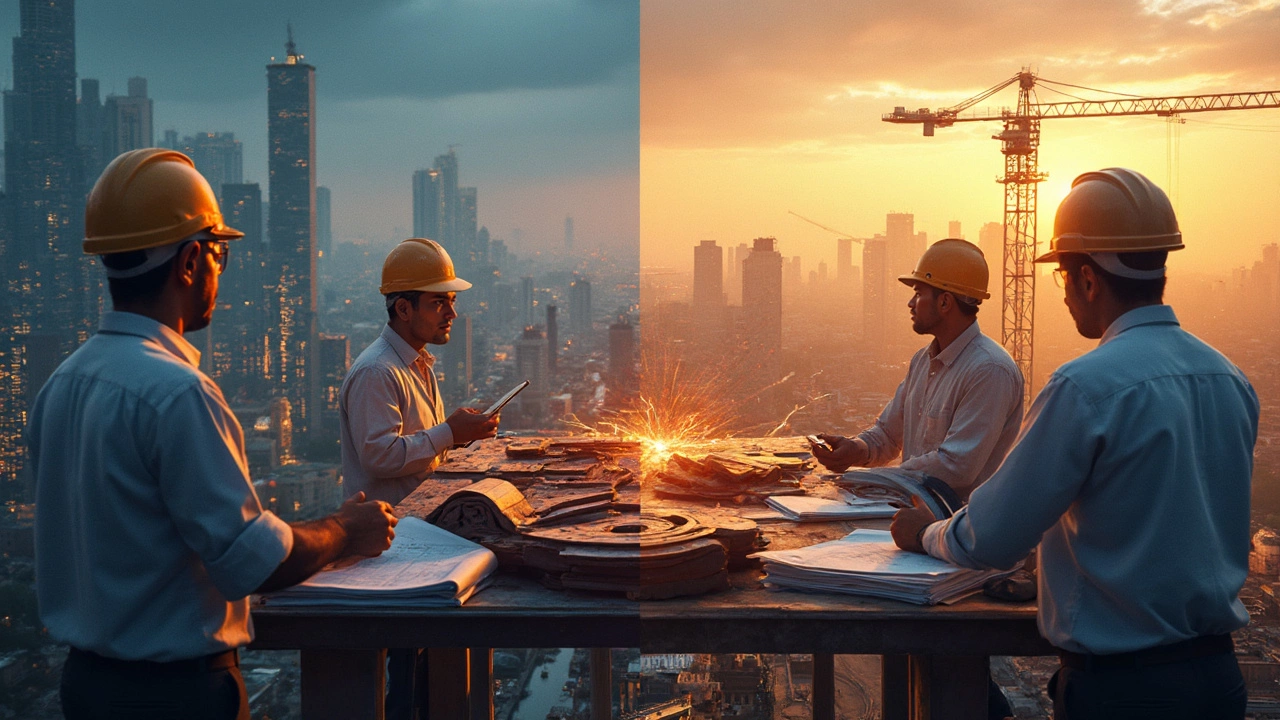
What Sets Each Country Apart?
Let’s break it down. Different countries have their own signature moves when it comes to making steel. Some go for mind-blowing innovation, while others focus on sheer volume or unbeatable consistency. If you’re looking to source the best steel, here’s what really separates the big players:
- Japan: If you care about precision and reliability, Japan is hard to beat. Think of brands like Nippon Steel. They're obsessed with removing impurities and tight quality checks. Japanese steel is the gold standard in the car industry and for electronics. Their factories put a lot into clean energy too, trying to reduce pollution in the process.
- Germany: German steel is famous for toughness and exact specs—no shortcuts. Companies like Thyssenkrupp are obsessed with detail, whether it’s for high-speed trains, giant cranes, or advanced tools. Their R&D labs keep coming up with new blends that push the limits for construction and manufacturing.
- South Korea: South Koreans, especially POSCO, made a name by combining quality and scale. They produce a ton and still manage to keep performance high. Korean steel is seen a lot in shipbuilding and auto parts, and their pricing is often more competitive without sacrificing much on quality.
- China: China wins on volume—no one pumps out more steel. The country is home to the world’s biggest steel plants. In the past, folks worried about their quality, but things have changed. Plants like Baowu Steel are now closing the gap with stricter standards, especially for construction grade steel. If you need lots of steel at a price that won’t wreck your budget, China is still the go-to.
- United States: The U.S. is known for specialty and high-strength steels, especially things like pipelines or defense projects. If ‘made in America’ matters to you, the U.S. has smaller total output but still packs a punch in critical sectors. Companies like U.S. Steel and Nucor work a lot with recycled scrap, which is better for the planet.
Each country’s steel industry comes with its own strengths—some run on reputation, others on affordability or tech upgrades. It all comes down to what fits your project best: world-class consistency, innovation, scale, or budget.
How to Pick the Right Steel Supplier
Picking the right supplier isn’t just about finding the lowest quote. You want a partner who delivers on time, doesn’t play games with quality, and can actually back up the claims on their website. Here’s how to make sure you don’t get burned or end up with steel that won’t pass inspection later.
- Best steel means looking at how the supplier treats quality—don’t settle for vague promises. Check if they follow international standards like ISO 9001, ASTM, or EN. These badges aren’t just for show; they prove a supplier sticks to set rules and checks every batch before shipping.
- Ask about the mill test certificates. Reliable steel manufacturers provide mill certificates for every batch. These tell you exactly what’s in the steel, from chemical makeup to mechanical strength.
- Check out their delivery record. Bad delays can bring your whole project to a halt. Trusted suppliers don’t just have big factories—they have solid logistics, too. For big orders, ask for references and talk to previous clients.
- Consider after-sales service. If all they care about is getting paid, walk away. Good suppliers help with paperwork, traceability, and even troubleshooting later if things go sideways.
Here’s how a few top countries stack up for steel supplier reliability:
| Country | Average Delivery Reliability (%) | Known For |
|---|---|---|
| Japan | 96 | Consistency, advanced tech |
| Germany | 94 | Top-notch quality control |
| South Korea | 93 | Big volume, good price/quality |
| China | 89 | Mass supply, huge variety |
Don’t just go by what the supplier says—dig around for real reviews and try getting samples if you can. Spend a bit more time upfront and you’ll avoid ugly surprises (and angry calls from your team) down the road.

Insider Tips for Sourcing Top-Notch Steel
If you want to get the best steel for your project, you’ve got to know more than just the name of the country it comes from. Here’s how the pros go about choosing the right mills, sorting out legal trouble, and making sure what turns up on the truck is as good as advertised.
- Know Your Specs: Don’t rely on just asking for "good steel." Always specify the grade and standards you need. Japanese and German mills, for example, often exceed basic standards set by SAE, ASTM, or ISO. They’re famous for tight tolerances, especially for automotive and construction use.
- Check Certifications: Ask for mill test certificates (MTCs) with every order. These should match global standards and have the heat batch number, mechanical properties like tensile strength, and even chemical composition. No paperwork? Big red flag.
- Visit or Audit the Plant: If your project’s really high-stakes, don’t just trust emails and mood boards—auditing the mill or getting a local agent to visit is huge. Many buyers from the U.S. and EU want firsthand assurance. China’s Baowu Steel and South Korea’s POSCO offer virtual tours and third-party audits for big clients.
- Understand Logistics and Delivery: It’s easy to overlook, but delays in shipping, customs hold-ups, or even port backlogs can wreck your timeline. Did you know Indian steel exports sometimes get stuck weeks in port because of paperwork holdups?
- Negotiate for Consistent Supply: Some countries (like South Korea and Germany) pride themselves on reliability. Nail down delivery schedules and get penalty clauses for delays or quality drops, especially if you’re sourcing from suppliers in China or India where volumes are high but consistency can vary by plant.
Here’s a snapshot comparing main steel exporting countries:
| Country | Top Steel Plant | Annual Exports (Million Tonnes, 2024) | Reputation for Quality | Average Delivery Reliability (%) |
|---|---|---|---|---|
| Japan | Nippon Steel | 35 | Excellent | 96 |
| Germany | thyssenkrupp | 21 | Excellent | 95 |
| South Korea | POSCO | 29 | Very Good | 93 |
| China | Baowu Steel | 68 | Mixed | 87 |
| India | Tata Steel | 19 | Good | 82 |
One last tip—when searching for the best steel, don’t just chase the lowest cost. Go for trusted names in the industry, make your expectations clear, and keep tabs on every step. Cutting corners might save a little cash upfront, but nobody wants surprise headaches or expensive do-overs months down the line.
